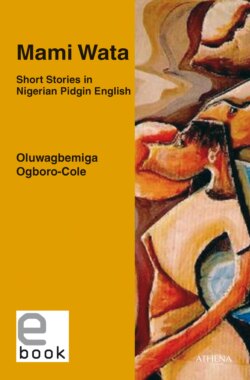Читать книгу Mami Wata - Oluwagbemiga Ogboro-Cole - Страница 5
Introduction
ОглавлениеDuring the colonial era in Nigeria, both the missionaries and the elite considered Nigerian Pidgin English as a means of communication with a subversive undertone. The language was described as part of the ongoing passive resistance to colonial rule. There was a lot of prejudice against the language. The language was, in fact, classified ›Broken English‹. the term stuck to it. Surprisingly, today, the language has gained acceptance among students, professors, the mass media, the entertainment industry, government agencies and the religious sector. People from these fields believe they had in earlier times been deprived the use of this language.
The Federal Republic of Nigeria comprises 36 states and the Federal Capital Territory. Several languages are spoken in the country by its numerous ethnic groups. There arose, therefore, a need for a common medium of communication among the diverse ethnic groups. Apparently, this would facilitate understanding, tolerance, peaceful coexistence and harmony among the various peoples. Pidgin serves this purpose of a language of contact. The popularity Pidgin English enjoys presently can be attributed to the awareness given to it by the youth. Although Pidgin English is believed to be the most logical choice as a lingua franca, it has received little recognition from the people responsible for language policy in Nigeria. Today, modern linguistics has contributed to a reversal in attitude towards Pidgin English. The Language is now recognized by scholars all over the world.
The folktales in Mami Wata are written in Nigerian Pidgin English. Mami Wata literarily means Mother of Rivers. In Yoruba folktales, it refers to the Mermaid, who is an iconic figure symbolizing the goddess of the sea. This goddess has magical powers. With these powers, she can provide every person’s needs. Till this day, the Mami Wata is worshiped by her followers as a deity. In some quarters, the Mami Wata is called ›Yemoja‹ (mother of the fish) or ›Yeye Olokun‹ (mother of the Atlantic Ocean), while some other people call her ›Yeye Osun‹ (mother of the Osun River). Osun River is located in Osogbo, Osun State, in the western part of Nigeria. Osun River is interwoven with the history of the Yoruba people. It represents the creation of the city life of Ile Ife and the adventures of past Yoruba warriors. These warriors are highly respected and deified by the Yorubas and have been immortalized. Yoruba folktales frequently use animal imagery, characters, skin patterns, forms, their pace and weaknesses etc. to create visual images and as forms of expression. Among the Yorubas, parents use speech forms derived from Yoruba folktales (many of them involve animal characters) to communicate with their children and vice versa. This is because everyone, in spite of his or her educational or social status, can relate to these folktales. For example, the tortoise is used as a moral figure to teach a child the difference between right and wrong. The stories in Mamy Wata are based on childhood stories my mother told me in Yoruba. It is hope that the book would also contribute its part in making society have a more positive attitude towards Pidgin English, a reversal of the trend in colonial times.
